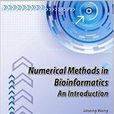全書採用將生物分子的符號序列首先變換為數值序列,之後,用數學方法從這些數列中提取生物信息.因而,先全面系統介紹了DNA序列和蛋白質序列的數字及圖形表達後,就用幾種正交變換進行基因識別,蛋白質對比,以及用聚類分析來了解DNA和蛋白質的性質及進行分類.微數組,脂肪組是現成的大量生物數據,我們就用數理統計方法處理這些數據得到了某種癌症的誘因.生物過程是動態過程,書中介紹了用微分方程和差分方程模型模擬這種過程的多種算法.由於生物數據部分缺失現象經常發生,最後介紹了迷失數據彌補的許多方法.
基本介紹
- 書名:生物信息學中的數學方法
- 作者:王嘉松 嚴明
- 出版日期:2013年3月28日
- 語種:英語
- ISBN:7030369858
- 外文名:Numerical Methods in Bioinformatics An Introduction
- 出版社:科學出版社有限責任公司
- 頁數:212頁
- 開本:5
內容簡介
圖書目錄
CHAPTER 1 SOME BIOLOGICAL CONCEPTS
1.1 Cell
1.2 Genetic Material: DNA, Gene and RNA
1.2.1 DNA
1.2.2 Gene
1.2.3 RNA
1.3 Protein and Amino Acids
1.4 Chromosome
1.5 Omics
1.5.1 Genomics
1.5.2 Microarray
1.5.3 Proteomics
1.5.4 Lipidomics
REFERENCES
CHAPTER 2 GRAPHICAL REPRESENTATIONS OF DNA SEQUENCE
2.1 Three-Dimension (3-D) GraphicaIRepresentation
2.2 2-DGraphicalRepresentatio
2.3 2-D GraphicalRepresentations Without Degeneracy
2.4 Used a 1-D NumerioalRepresentation offourNucleotides to Construct a 2-D Graplucal Representation ofthe DNA Sequence
REFERENCES
CHAPTER 3 NUMERICAL REPRESENTATIONS OF DNA SEQUENCE
3.1 4-D and 3-D Numerical Representations of a DNA Sequence
3.2 2-D Numerical Representations of a DNA Sequence
3.3 The Complex NumericalRepresentation
3.4 1-D Numerical Representations of four Nucleotides and 2-D Graphical
Representation of a DNA Sequence
3.5 The Representations ofFeature Vector, Genome Space and Matrix Representation of DNA Sequence
3.6 The Numerical Representation Based on Physical, Chemical and Structural
Properties of DNA Sequence
3.6.1 The numericalrepresentations based on some attribute equivalences
ofnucleotides
3.6.2 The representation of DNA by the inspiration from codon and the idea ofthree attribute equivalences
3.6.3 EIIPnumericalrepresentationfornucleotides
REFERENCES
CHAPTER 4 NUMERICAL REPRESENTATIONS OF PROTEIN
4.1 1-D Numericaland GraphicalRepresentations ofthe AminoAcid Sequence
4.2 2-DNumericaland GraphicalRepresentations ofthe AminoAcid Sequence
4.3 A 2-D Graphical Representation and Moment Vector Representation of Protein
4.4 3-D Numerical Representation of Protein
4.5 The 10-D Representation ofan Amino Acid
4.6 The Vector andMatrix Representations of Protein Sequence and Protein Space
4.7 Other Schemes of the Representation for Protein
REFERENCES
CHAPTER 5 PRACTICAL ORTHOGONAL TRANSFORM
5.1 Some Features and Algorithms for the Discrete Fourier Transform
5.1.1 Fourier transforms ofthe original sequence and its subsequence
5.1.2 The independency ofthe Fourier transforms at several frequencies
5.1.3 The Fourier transform ofsymbolic sequence
5.1.4 Fourier transform ofbinary sequence
5.1.5 Several algorithms ofFourier transform
5.1.6 The properties ofFourier transform ofreal sequence
5.2 WaveletAnalysis
5.2.1 Introduction
5.2.2 Multiresolution analysis ofa function by Haar scaling and wavelet
function
5.2.3 Construction of wavelet systems
5.2.4 Mallet transform
REFERENCES
CHAPTER 6 IDENTIFYING PROTEIN-CODING REGIONS (EXONS) BY NUCLEOTIDEDIS TRIBUTIONS
6.1 Portein Coding Regions Finding in DNA Sequence
6.1.1 Introduction
6.1.2 The stochastic simulation and several computing formulae
6.1.3 FEND algorithm,predicting protein coding regions from nucleotide distributions on the three positions ofa DNA sequence
6.1.4 Performance evalumion ofFEND algorithm
6.2 The Experiment for Distinguishing Exon and Intron Sequences by a Threshold
6.2.1 Motivation
6.2.2 Idea ofdistinguishing exon and intron sequences
6.2.3 Results and discussion
REFERENCES
CHAPTER 7 PROTEINCOMPARISONBYORTHOGONALTRANSFORMS
7.1 Protein Comparison by Discrete Fourier Transformation(DFT)
7.1.1 EIIP representation ofprotein sequence
7.1.2 Symmetry ofdiscrete Fouriertransformofreal sequence
7.1.3 Cross—spectral function
7.2 Protein Comparison by Discrete Wavelet Transformation
7.2.1 Several techniques needed for DWT method
7.2.2 The performance ofthe DWT method
REFERENCES
CHAPTER 8 THE APPLICATION OF VECTOR REPRESENTATIONS TO BIOLOGICAL MOLECULE ANALYSIS
8.1 Use Feature Vector toAnalyze DNA Sequences
8.1.1 Feature vector representation ofDNA sequence
8.1.2 Comparing DNA sequences
8.2 A Protein Map and its Applications.
8.2.1 Recalling a 2-D graphical representation and moment vector representation ofprotein]
8.2.2 Protein map and cluster analysis
8.3 An Appendix:Introduction to Cluster Analysis1
REFERENCES
CHAPTER 9 THE STATISTICS ANALYSIS OF LARGE AMOUNT OF EXPERIMENTAL DATA
9.1 A Way tO Process Microarray Data
9.1.1 Data form
9.1.2 Microarray data set.
9.1.3 Preliminary filtering
9.1.4 Assessing normalization
9.1.5 Hypothesis test.
9.1.6 Conclusion
9.2 The Statistical Analysis ofa Set ofLipidomics Data
9.2.1 Introduction
9.2.2 Statistical techniques ofinitial data processing
9.2.3 Initial data arrangement
9.2.4 Hypothesis testing analysis
REFERENCES
CHAPTER 10 APPLY SINGULAR VALUE DECOMPOSITl0N TO MICRoARRAVANALYSIS
10.1 SVD,PCA and GSVD
10.1.1 Singularvalue decomposition
10.1.2 Principal component analysis
10.1.3 Generalized singular value decomposition
10.2 Apply SVD/PCA to Microarray Analysis
10.3 GSVD Analyzes the Microarray Data
REFERENCES
CHAPTER 11 DYNAMICALANALYSIS MODELS OF GENE EXPRESSION
11.1 DifierentialEquationsModel ofGeneExpression
11.1.1 Transcription model
11.1.2 Nonlinear dynamic equ~ions
11.1.3 Linearization ofthenonlineartranscriptionmodel
11.1.4 Approximating coefficientmatrixMby Fourier series
11.1.5 Solutiontotranscriptionmatrix Cand V
11.2 Modified Linear Differential Equations Model
11.3 DynamicalModelBased on SingularValueDecomposition.
11.3.1 Introduction
11.3.2 Reducing gen’s number
11.3.3 The approachbasedon singularvaluedecomposition(SVD)
11.3.4 The methods ofsolving dynamical models
REFERENCES
CHAPTER 12 MISSING MICROARRAY DATA INPUTTING
12.1 The Ad Hoc Methods
12.2 Missing Data Inputting Based on SVD
12.2.1 A llew way for missing data inputting
12.2.2 0ther method based on SVD
12.3 Weighted K-Nearest Ne Jlghbors.KNN.Impute Algorithm
12.4 Estimation of Missing,alues in Microarray Data Based on the Least Square Prineiple
12.4.1 Least squares estimate 0fthe unknown variable
12.4.2 The least square estimation ofmissing data based on genes.
12.4.3 The least square estimation ofmissing data based on arrays
12.4.4 Combining the gene and array based estimates
12.5 Local Least Square Inputting rLLSinputel
12.5.1 Selecting genes
12.5.2 Gene-wise fornmlation of 10cal least squares imputation
12.6 The Comparison ofthe Methods ofMissing Data Inputting
REFERENCES
PLATF

